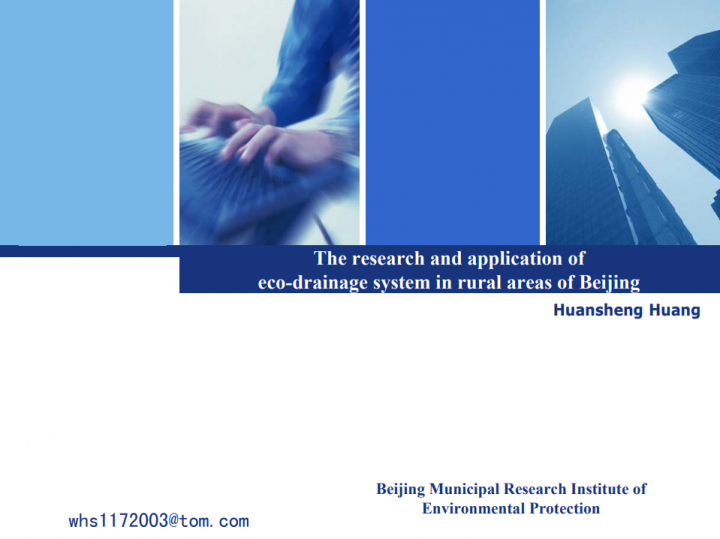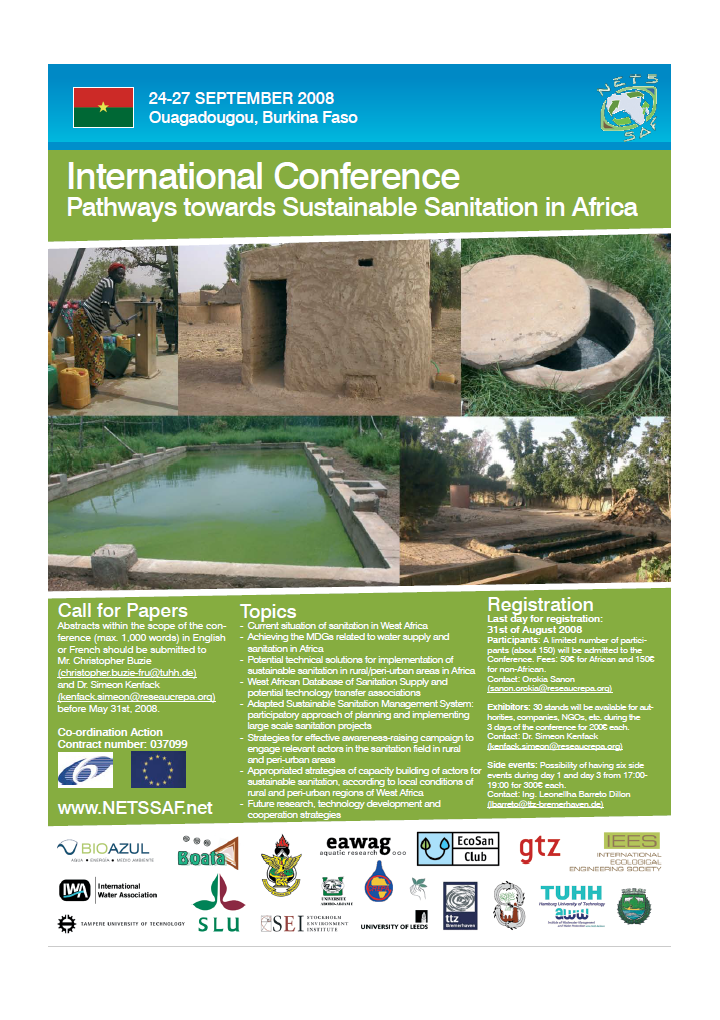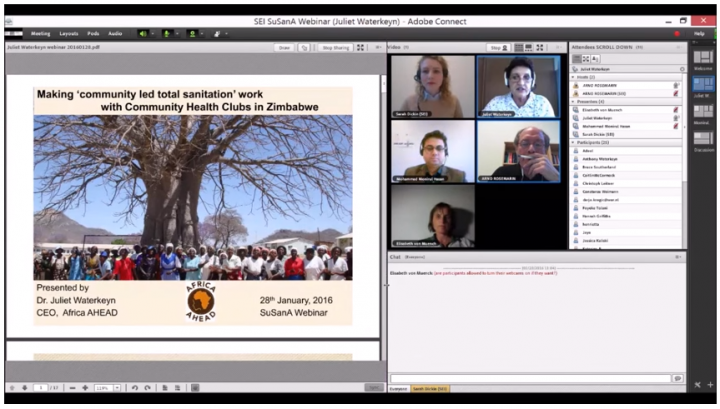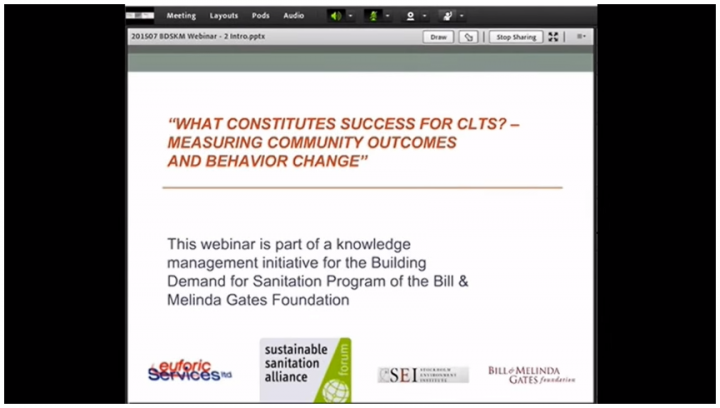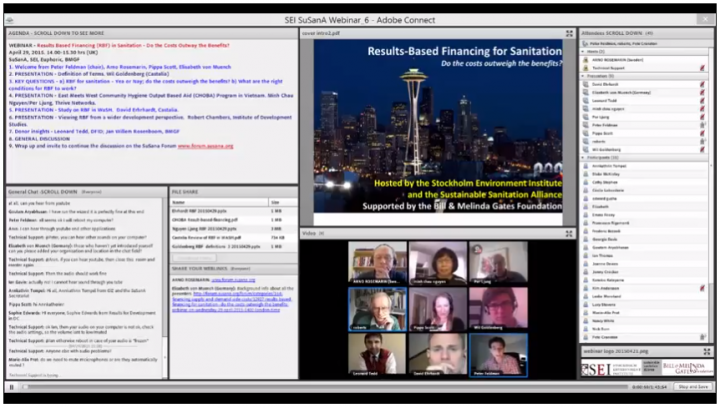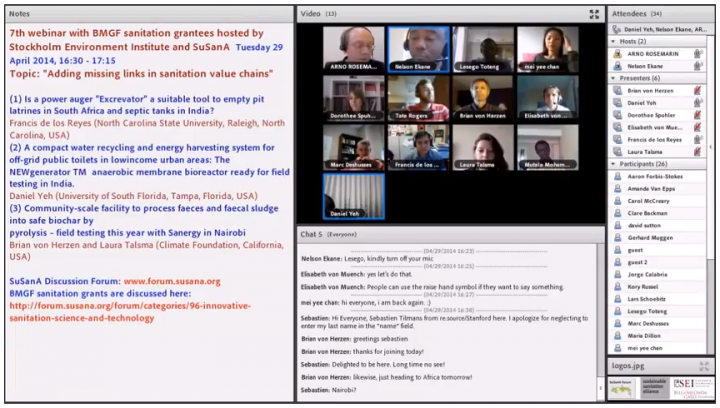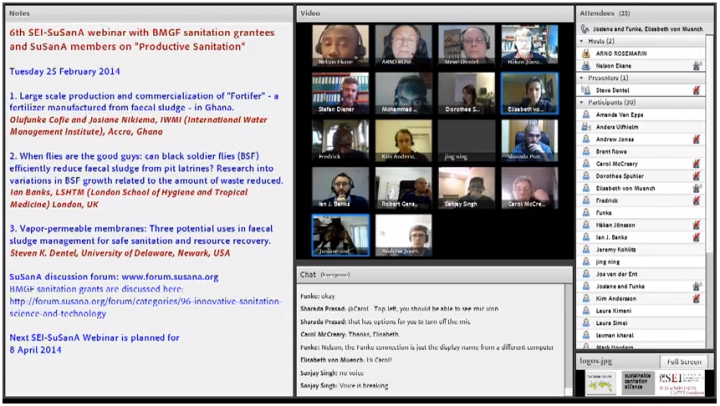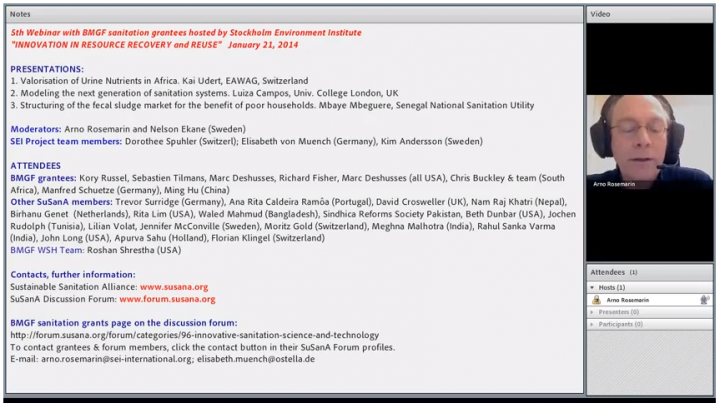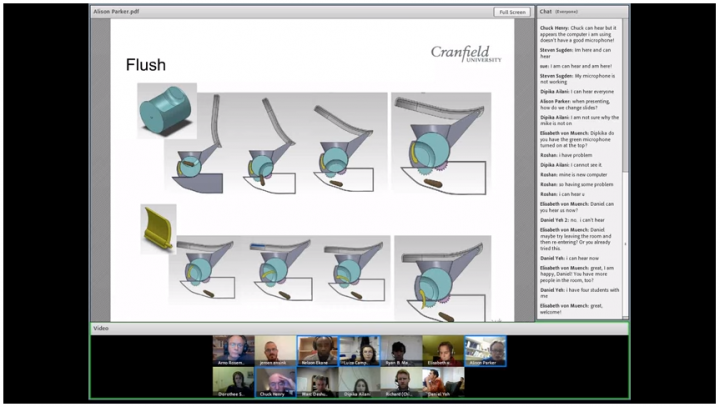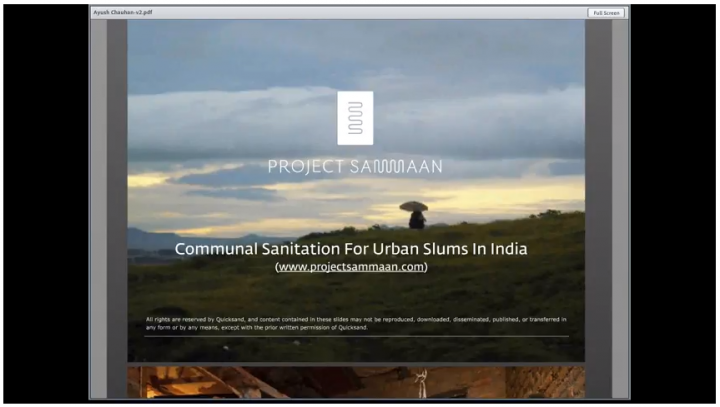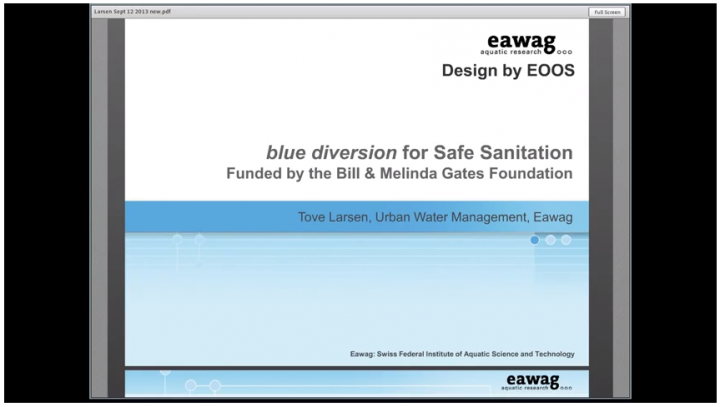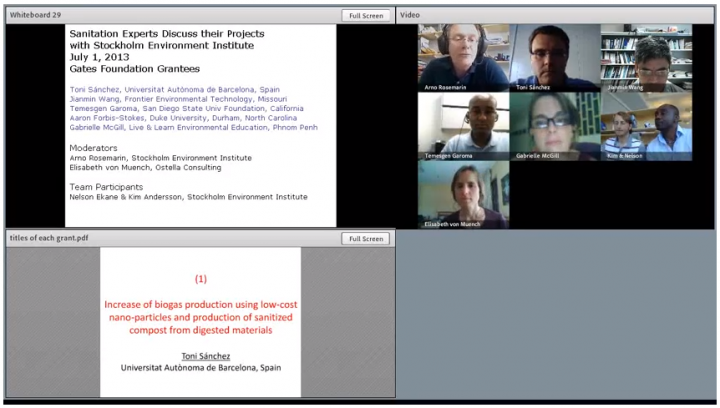DFID, UNWATER, UNICEF, WSSCC and Care Bangladesh. (2008) Community Led Total Sanitation in Bangladesh A documentary video
The video is a documentary about the Community Led Total Sanitation (CLTS) approach, an innovative methodology for mobilising communities to completely eliminate open defecation and take their own action to become open defecation free. It shows projects in Bangladesh and interviews with one of its pioneers Dr. Kamal Kar. It has been produced 2008 within the BBC earth report series on behalf […]
Various Authors (2007) International Conference on Sustainable Sanitation in Dongsheng, China Conference materials
Project implementers, practitioners and researchers within the areas of urban and rural ecological and sustainable sanitation, organic waste management and agricultural reuse participated in the International Conference on Sustainable Sanitation on 26-29 August 2007 in Dongsheng, China in order to share experiences and best practices. The presentations of this conference are available as PDF on the links below.
Various Authors (2007) Water and Food Security for Latin America International Conference in Fortaleza, Brazil Conference materials
The International Conference on Sustainable Sanitation "Water and Food Security for Latin America" was organized by Ecosanlac and the Federal University of Ceará with support of the IWA specialist group. It took place from 26-29 November 2007 in Fortaleza, Ceará, Brazil and became a very successful event and exceeded the expectations of the organizers. During four days, more than 200 local and international participants had the […]
Various Authors (2008) Seminar on Food Security on World Water Week in Stockholm, Sweden Conference materials
Convenors: Food and Agriculture Organization of the United Nations (FAO), German Agency for Technical Cooperation (GTZ), International Fund for Agricultural Development (IFAD), International Centre for Soil Fertility and Agricultural Development (IFDC), International Water Management Institute (IWMI), Stockholm Environment Institute (SEI), Swedish University of Agricultural Sciences (SLU), United Nations Convention to Combat Desertifi cation (UNCCD) and Sustainable Sanitation Alliance (SuSanA)
Various Authors (2008) Sanitation Challenge Conference in Wageningen, Netherlands Conference materials
The Sanitation Challenge Conference was deliberately aimed to create a dialogue between civil, process, agricultural and environmental engineers; urban planners, sociologists, economists, and political scientists who are involved in international sanitation research and implementation. It took place in Wageningen, the Netherlands from 19. to 21. May 2008. Furthermore, this conference tried to bridge the gap between sanitation research and demonstration in the ‘North’ and in the […]
Various Authors (2008) IWA World Water Congress in Vienna, Austria Conference materials
IWA World Water Congress and Exhibition took place from 7.-12. September 2008 at the Austria Centre in Vienna. It brought together about 4.500 international water / wastewater professionals and visitors, who discussed the latest developments in sustainable water and wastewater management and offered the possibility to exchange knowledge. In addition to over 1000 papers presented, a number of keynote speeches and various workshops the congress included […]
Various Authors (2008) NETSSAF International Conference in Ouagadougou, Burkina Faso Conference materials (in English and French)
The International Conference titled "Pathways towards Sustainable Sanitation in Africa" constitutes the most relevant event held under the project NETSSAF "Network for the development of Sustainable Sanitation in Africa", a Coordination Action supported by the European Union under the Sixth Framework Programme (FP6). A well prepared team organised this event successfully which was celebrated in Ouagadougou, Burkina Faso, from the 24th to the 27th of […]
SEI (2016) 10th SEI Webinar: Community initiatives for sanitation and health
Poor sanitation has serious implications for health including a large burden of diarrheal diseases, which remains the second leading killer of children under 5 globally, and a large burden of intestinal worms. Improving access to sanitation and hygiene and changing behaviours can bring not only health benefits but also many other positive changes in a community, including social, economic and environmental gains. Deepening our understanding of […]
SEI (2015) 9th SEI Webinar: CLTS monitoring success
This webinar was conducted on 22 June 2015 and has been recorded in 4 parts. This video clip contains Part 1 which is introduction by Pippa Scott (Euforic Services) during the webinar 'What constitutes success for CLTS? Measuring community outcomes and behavior changes'. To watch part 2-4 please go to links below. Speakers: 1) Ada Oko Williams, Technical Support Manager, Sanitation and Hygiene, WaterAid UK; 2) Darren […]
SEI (2015) 8th SEI Webinar: Results based financing (RBF) for sanitation
This webinar was organised under the Knowledge Management initiative (http://www.bdskm.net/) of the Building Demand for Sanitation (BDS) program of the Bill & Melinda Gates Foundation. The webinar was moderated by Peter Feldman, and supported by Pippa Scott and Pete Cranston of Euforic Services. It was hosted by Stockholm Environment Institute and the SuSanA secretariat on 29 April 2015. To watch Part 2-7 of this webinar, […]
de los Reyes, F. (2014) 7th SEI Webinar: Adding missing links in sanitation value chains
"Adding missing links in sanitation value chains" - a discussion with three Bill & Melinda Gates Foundation grantees. Hosted by: Stockholm Environment Institute and the Sustainable Sanitation Alliance (SuSanA) on 29 April 2018. This webinar has been recorded in 5 parts. This video clip contains Part 1, which is an introduction by Arno Rosemarin. To watch part 2-5 please go to links below. Moderator: Nelson Ekane (SEI) Sub-topic […]
SEI (2014) 6th SEI Webinar: Productive sanitation
"Productive sanitation" - a discussion with three Bill & Melinda Gates Foundation grantees. Hosted by: Stockholm Environment Institute and the Sustainable Sanitation Alliance (SuSanA) on 25 February 2014. This webinar has been recorded in 5 parts. This video clip contains Part 1, with an introduction by Arno Rosemarin. Moderator: Nelson Ekane (SEI) Sub-topics within the webinar: 1) Large scale production and commercialization of "Fortifer" - a fertilizer manufactured […]
SEI (2014) 5th SEI Webinar: Resource recovery and reuse - Introduction
"Resource recovery and reuse" - a discussion with three Bill & Melinda Gates Foundation grantees. Hosted by: Stockholm Environment Institute and the Sustainable Sanitation Alliance (SuSanA) on 21 January 2014. This webinar has been recorded in 4 parts. See links below for Part 2-4. The three papers given were as follows (see separate video clips): 1) VUNA - Valorisation of Urine Nutrients in Africa 2) Modeling the next […]
SEI (2013) 4th SEI Webinar: Innovation in Toilet Designs and Waste Treatment Technologies
"Innovation in Toilet Designs and Waste Treatment Technologies (Part 2)" - a discussion with three Bill & Melinda Gates Foundation grantees. Hosted by: Stockholm Environment Institute and the Sustainable Sanitation Alliance (SuSanA) on 26 November 2013. Moderators: Arno Rosemarin and Nelson Ekane (SEI) The three papers given were as follows: 1) Nano Membrane Toilet 2) New concepts for on-site sanitation based on bio-additives and pit design 3) Sol-Char Toilet: Using […]
SEI (2013) 3rd SEI Webinar: Innovative Sanitation Solutions for Urban Areas
Innovative Sanitation Solutions for Urban Areas - a discussion with three Bill & Melinda Gates Foundation grantees. Hosted by: Stockholm Environment Institute and the Sustainable Sanitation Alliance (SuSanA) on 07 November 2013. The topic of this expert chat was "Innovative Sanitation Solutions for Urban Areas", and it was the third webinar in a series this year with the aim to give increased exposure to the […]
SEI (2013) 2nd SEI Webinar: Innovation in Toilet Designs and Treatment Technologies
Sanitation Experts Discuss their Projects with Stockholm Environment Institute Bill & Melinda Gates Foundation Grantees Title: "Innovation in Toilet Designs and Treatment Technologies" This is the recording of an online expert chat using Adobe Connect hosted by Stockholm Environment Institute (Arno Rosemarin) on 12 September 2013. It is part of a larger grant that SEI received in November 2012 from the Bill & Melinda Gates Foundation. […]
SEI (2013) 1st SEI Webinar: Biogas sanitation
This is the recording of an online expert chat using Adobe Connect hosted by Stockholm Environment Institute (Arno Rosemarin) on 1 July 2013. It is part of a larger grant that SEI received in November 2012 from the Bill & Melinda Gates Foundation. The topic of this expert chat was "Research projects involving anaerobic processes with biogas generation", and it was the first expert chat […]
SuSanA (2015) The Sanitation Ladder: Next Steps Discussion Follow up webinar
Video of the webinar in follow-up to the Thematic Discussion Series discussion on “The Sanitation Ladder: Next Steps” on March 26th 2015.
SuSanA (2015) The Sanitation Ladder: Next Steps Introduction webinar
Introduction to the "The Sanitation Ladder: Next Steps" from thematic leader Patrick Bracken, the first in the SuSanA Thematic Discussion Series.
ZanaAfrica (2015) ZanaAfrica Presentation Sarphati Awards 2015
A video from ZanaAfrica for Sarphati Awards 2015 featuring Gitau Caroline as Chief Operating Officer of ZanaAfrica.

